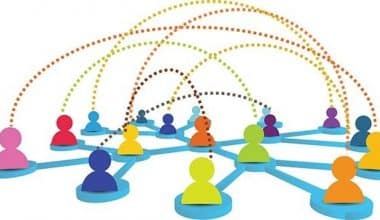Employee experience is a key aspect for many outstanding firms. Essentially, it transforms an otherwise boring workday into an exciting, motivating, and productive experience for employees. So, as an HR department, how should you approach employee experience? In this article, we’ll go over the concept as well as some practical recommendations.
What Is Employee Experience?
Employee experience is a multifaceted issue. It is essentially the collection of encounters, impressions, emotions, and other experiences that an employee has with their organization. Employee experience is how an employee feels working at your organization (and how your organization adjusts and enables their continuous experiences) from their first day or even before that.
The following is an example of the concept:
- Onboarding
- Routine tasks
- Staff experiences (perhaps connected to culture)
- Processes (such as absences from performance or planning)
- Exit interviews and employee feedback
The guiding principle here is that happy, contented, and heard employees are the foundation for overall corporate success. So, if your employees are happy and have a pleasant experience, it will show in their work for your company.
What is a Good Employee Experience?
We now understand what employee experience is and why it is so crucial. But what qualities distinguish an excellent EX?
Our 2022 Employee Experience analysis discovered three critical components of a positive employee experience:
- Inclusive Leadership
- An emphasis on employee well-being
- Help for hybrid employees
#1. Inclusive Leadership
Managers alone have a tremendous impact on the employee experience. According to Gallup, the most influential component in the employee experience is the employee’s boss. An inclusive manager, according to our newly published data, makes all the difference.
Individuals who work under inclusive managers have better business outcomes. In fact, they report higher levels of dedication, involvement, and perceived support.
#2. Well-being
EX was redefined by the global pandemic. It seems only logical that, in the midst of the global health crisis, well-being has arisen as a key component of the employee experience. We discovered that 55% of employees are dissatisfied. The absence of mental wellness is defined as a state of languishing.
We now prioritize employee well-being as a primary priority in providing a positive employee experience. According to the Willis Towers poll, well-being is a top priority. In fact, 63% of employers believe their employee wellness initiatives need to be improved.
#3. Help for hybrid employees
According to a recent study, one in every three workers would quit their jobs if they had to return to the office. According to the same poll, 51% of workers want a blended work environment. Working from home is no longer a luxury for many people; it is a need.
Organizations must address the belonging tax in order to provide a positive employee experience. This disparity between hybrid and remote workers is referred to as the belonging tax. This chasm is causing stress and exhaustion, as well as rising sentiments of exclusion.
To achieve a positive employee experience, organizations must address the belonging tax. Increased communication and well-being activities are part of the support for hybrid and remote workers.
A positive employee experience is comprised of several factors. Other elements include:
- Corporate culture
- Total rewards (pay, benefits, and perks)
- Trust
- Collaboration
- Open communication
- A psychologically secure work environment
- Opportunities for learning, growth, and development
- A strong sense of belonging
- A strong sense of connection, purpose, and meaning
Benefits of Positive Employee Experience
Enhancing the employee experience offers various advantages, all of which are related to increased employee job satisfaction, which leads to higher revenues and better market positioning. These are some examples:
#1. Increasing employee engagement and productivity.
Due to consequences such as poorer production and profitability and more absences, disengaged employees can lose businesses billions of dollars each year. Engaged employees, on the other hand, are more productive and bring other benefits such as higher retention rates and workplace safety.
#2. Reduced absenteeism.
Unhappy employee absence rates have a detrimental impact on morale, productivity, and economics. Absenteeism is lower with happy employees.
#3. Improved Work Quality
According to Harvard University psychologist and happiness specialist Shawn Achor and others, happiness levels determine job success more than IQ or skill set. A “happy” brain, for example, perceives more possibilities and is more creative.
#4. Improved customer relations
The customer experience is impacted by the employee experience, which influences all aspects of the business. Indeed, many specialists feel that CX is a direct effect of EX. When interacting with consumers, happy staff are more likely to express positive attitudes and sentiments. They also tend to be more committed to and knowledgeable about products and services, allowing them to provide superior customer service.
Stages of the Employee Experience
EX is an adventure. When we examine this trip from beginning to end, we can divide the employee experience into six distinct stages. Every touchpoint affects the employee experience. This happens even before the employee starts working for the company. Let’s take a look at the employee’s lifetime as a whole.
#1. Attract
This is a fascinating time in the employee experience. Before there is even an available post, the employee attraction stage takes place. Attraction relates to how prospective employees connect with and learn about your company.
In this stage of EX, brand recognition can be very important. Brand awareness is comprised of your organization’s image, presence, reputation, and culture. Consider how you can raise your organization’s brand awareness. Marketing techniques such as social media, blogs, and even live events and conferences might be beneficial.
#2. Hire
The employee experience is now in its second stage. This stage, however, does not begin when a candidate signs the offer letter. The hiring stage, like the attraction stage, begins before the individual becomes an employee.
The hiring step of the employee experience considers the following:
- The candidate’s recruitment process experience
- Talent management in general
- Interactions with recruiters, hiring managers, and others during the hiring process
- Trust is built via open communication.
#3. Onboard
When an employee begins a new job, it is critical to receive feedback in real-time. The onboarding stage examines the employee’s experience getting up to speed at their new firm. This begins on the first day of work.
Organizations that provide excellent onboarding experiences employ a variety of strategies, including:
- A pleasant and inviting atmosphere
- From the start, there was a strong sense of belonging and inclusion.
- The essential beliefs, mission, and strategy of the firm are discussed.
- Workplace experience (particularly in this age of hybrid onboarding)
- Clear communication and expectations (including a formal job description) are essential.
- Meetings and check-ins on a regular basis to examine how the onboarding experience is progressing
- A chance to provide (and receive) feedback
#4. Engage
This stage is also known as the “retain” stage of EX. With good reason. Data shows that employee engagement leads to employee retention.
Organizations work hard at this stage to keep their people happy, fulfilled, and engaged in their jobs. Because we are all unique, this looks different for each employee. As business leaders, we must provide several avenues for employees to participate in the enterprise.
It’s also critical to solicit input on a regular basis. Pulse surveys are used by several organizations. Others encourage managers to encourage free dialogue in one-on-one meetings on a regular basis. Others conduct large-scale company-wide surveys to collect data and feedback. Maintain open lines of communication, regardless of manner.
Every organization’s definition of employee engagement is different. It all comes down to making people feel valued, and seen, and a sense of belonging. The likelihood of employee engagement increases when they feel like they belong.
#5. Develop
Opportunities for learning and development are crucial for EX. According to research, professional growth offers enormous benefits. Consider upskilling, higher employee involvement, enhanced productivity, improved overall performance, and other benefits.
Employees have also stated that opportunities for advancement will make them more likely to stay with their current firm. This involves supporting internal mobility or lateral moves in order to assist staff growth.
Discuss creative approaches to provide learning opportunities to employees with your HR function or HR leaders. Employees’ work experience and learning experience are inextricably linked.
#6. Exit
The employee experience comes to a close at this point. Most employees leave the company at some point in their careers. Many industry professionals believe that this stage of the employee experience is just as crucial as the first.
This stage has several components. Organizations should bear the following in mind:
- Request feedback. This frequently takes the form of a departure interview. Employers must attempt to comprehend the employee’s decision to quit. It’s also critical that the employee feels heard – and that their opinion is valued.
- Check-in with the group. An employee’s departure can have repercussions. It has an effect on their immediate team members. However, absences can have ramifications for cross-functional teams, ongoing projects, and more.
- Positivity. It is never pleasant to lose an employee. It is critical to maintain a happy, respectful, and professional attitude. Managers must continue to model actions that build a psychologically healthy work environment.
How Do You Assess Employee Satisfaction?
It is advisable to consider gauging employee experience from both internal and external perspectives. This can entail measuring your own workforce via a pulse survey or employee engagement survey, as well as investigating your analytics and reports (for example, seeing how many employees took development days to improve their positions).
Another thing to consider is what your competitors are doing. Is there anything you can learn from them about optimizing employee experiences? This is especially crucial when it comes to lowering attrition rates, as you want to ensure that your best staff thinks they are valued and have little incentive to seek brighter pastures.
7 Steps to Creating Excellent Employee Experiences
How can you ensure that your employees have the greatest possible experience? Here are seven steps, ideas, and best practices that we believe can help improve the process. It’s time to get motivated:
#1. Get a General Overview
Compile a list of all important touchpoints and thoroughly examine them. What does each stage of your procedure look like? What’s lacking? What could be more efficient? What role could HR software play in this? Would it benefit employees?
#2. Establish Objectives
Define goals for each phase, not just the overall experience. This will provide you with arguments to push planned initiatives through with stakeholders, as well as assist you in better-measuring success after the fact.
#3. Hit the mark
You must recognize and comprehend your ideal employee. Consider the target audience, how they think and feel, and what will provide them with the best experience. Align your ideal talent with the finest possible experience, and cater to them rather than forcing them into a box.
#4. Workout Metrics
Now that you know where things stand, what your goals are, and who you want to reach out to, you must move through each of those processes smoothly. So, how will it be accomplished? Will new technology be beneficial? Consider redesigning methods. Make a list of everything you could do, analyze it, and decide (in a sustainable way) how to implement each of them.
#5. The Phase of Implementation
Your steps should not and will not be implemented all at once. As a result, concentration is essential. Begin with a personnel-related core procedure, such as performance or feedback, and build from there. Why? Because it has a direct and immediate impact on employee experience and can provide you with a notion of reaction and returns.
#6. Measure success
It just takes three months. After that, you should be ready to begin examining your outcomes and determining whether they are effective. For example, supposing you began adopting a new hybrid working policy – you can examine how many employees took advantage of the offer, solicit feedback from them, or assess overall productivity to see if it made a difference.
#7. Gain Input Control
There’s a school of thinking that says this should happen at every stage, but we’d also advocate it toward the conclusion. Send out pulse surveys to gauge employee sentiment and iterate as needed. After all, employee experience is nothing without employees, so you must collaborate with them at every level if you want things to go well.
Employee Engagement vs. Employee Experience
The distinction between employee experience and employee engagement is defined by the distinction between experience and engagement. Simply put, employee experience encompasses everything an employee thinks, feels, and sees. Employee engagement, on the other hand, refers to how positively an employee is preoccupied with or engaged in the job. Employee engagement is one outcome of the total experience and is much more closely related to productivity.
As opposed to employee experience, employee engagement is frequently associated with a focused focus on technology tools, assessment, or incentives like free food. These types of characteristics can be incorporated into an employee experience strategy, but they do not replace a comprehensive and long-term approach to developing happy, loyal, and productive employees.
It is crucial to highlight that there are numerous definitions of employee experience and employee engagement, as well as accompanying distinctions. Vendors and industry observers may all have their own definitions. Regardless of these differences, after more than a decade of the employee experience phrase becoming popular and firms focusing on the concept of employee engagement, many studies reveal that the majority of companies are not making progress, and employees are dissatisfied at work.
Employee Experience With Workplace Technologies
Employee experience technology is now required for any employee experience strategy. In fact, configuring the technology should be a top priority: you need to hear every voice in your organization, whether it’s in the office, on the job site, or remotely.
To ensure you can take action when and where it matters most, across every touchpoint, you’ll need a single, all-encompassing listening engine with capabilities to help you understand and build the unique employee experiences your diverse workforce requires.
This engine must comprise the following components for a complete end-to-end employee experience:
#1. Listening aids
Instead of soliciting feedback, actively seek it out through a wide range of outlets. A listening engine that analyzes engagement responses in real-time using artificial intelligence and machine learning can:
- In recorded video feedback, customers provide comments.
- Telephone calls in customer service centers
- SMS and chat application conversations
- App and website feedback
- Employee feedback in collaboration systems, such as Slack. Slack and Microsoft Teams
- Comments on corporate review websites
- Sentiment on social media
- Any internet-connected smart device can provide feedback.
#2. Prediction Analytics
AI-driven analytics and powerful statistical and human language technologies analyze your experience and operational data 24 hours a day, seven days a week to discover crucial areas of focus.
These technologies assist you in gaining deep insights from your employee feedback system by detecting trends in open-text input using sentiment and topic analysis.
#3. Automated Actions and Workflows
Automate frontline managers’ activities and real-time workflows, using feedback-to-action loops for every employee experience.
You can move from insight to action and start closing gaps across your business with automated actions and procedures.
#4. DEI Capabilities
Create an empowering experience for all of your people by designing your culture of belonging. Allow leaders to immediately see the most effective measures they need to take to close DEI gaps.
You can leverage research-backed approaches and purpose-built tools to accomplish significant change at scale with the proper DEI solution.
#5. Onboarding Optimization
Create the foundation for successful teams by using onboarding surveys and analytics to reduce ramp time, increase productivity, and encourage early involvement among your new employees.
You may use technologies such as Qualtrics Candidate Experience to turn onboarding and candidate engagement into a competitive advantage. You may develop and improve the whole experience, as well as expand your talent pipeline, cut expenses, streamline operations, and do a variety of other things.
#6. Diagnostics for exit interviews
You’ll understand why your best performers leave with real-time exit analytics, and you’ll be able to drive actions across the organization to retain your top talent and build a happier, more engaged workforce.
You can also track the impact of the adjustments you make to boost retention, from how those changes affect engagement to the financial rewards they bring to your firm.
#7. Employee polls
The most trusted and safe method of collecting feedback at scale. Employee surveys allow you to delve into your employees’ thoughts and feelings and learn what they value the most. Once you understand what motivates and engages them, you can begin to build people-centric tactics that increase retention, well-being, inclusiveness, productivity, and satisfaction, so assisting your business in moving forward.
We’ll go over some of the most important types of employee experience surveys you’ll need as part of your experience management toolkit below.
Types of Employee Experience Survey
To provide tailored experiences, you must first understand how employees feel at various times of their employee lifecycle: when they join you when they grow, and when they leave. What excellent experiences have you had, and where could your organization improve?
To monitor employee engagement and experiences at important points in the lifecycle, an employee experience management program should include several sorts of listening features. Your listening program must create feedback on a regular basis in order to obtain a deeper knowledge of how your employees feel.
Pulse surveys, for example, collect a regular, organized measurement of employee views, whereas ad hoc surveys collect just-in-time feedback on issues such as organizational changes, new programs or regulations, or business initiatives.
#1. Participant surveys
Employee engagement is a measurement of a person’s connection to their work and how they think, feel, and act to assist their organization in meeting its goals. These appraisals, which are usually done once a year, are especially valuable during the retention stage of the employee lifecycle since they show how interested and engaged established workers are in their work.
Employee engagement has an impact on the entire organization:
- Increased performance – According to research, business unit engagement predicts future customer experience metrics, productivity, and financial performance.
- Lower attrition – Engaged employees are 87% less likely to leave their firm, resulting in lower expenses for recruiting new employees, training them, and waiting for them to ramp up to full production.
- Revenue growth – According to Bain & Company, organizations with highly engaged employees grew revenues 2.5 times faster than those with low levels of engagement.
- A better customer experience – 70% of engaged employees think they understand how to address the demands of customers, compared to 17% of non-engaged employees.
#2. Candidate Response Surveys
Candidate response surveys assess your organization’s ad-to-hire process for prospective employees. A good survey will capture the experiences of both successful and unsuccessful candidates, making everyone feel important and heard, regardless of the outcome. It will demonstrate the success of your advertising and marketing, brand, and recruitment operations. In addition, treating rejected candidates nicely improves the company’s brand by building advocates who had a favorable experience with you.
#3. Onboarding questionnaires
Onboarding introduces new hires to their coworkers, their roles, expectations, and accessible resources, as well as assimilates them into your business culture. Using onboarding questionnaires, you can learn what your new hires think of their “ramp time.” Collect early impressions from day one, then conduct surveys on a regular basis once new hires have had an opportunity to settle in and build their thoughts. The onboarding experience sets the tone for the whole employee journey, and it is closely tied to key employee experience and engagement KPIs.
#4. Training Feedback Surveys
Training sessions are essential for a smooth onboarding process, but they are also significant milestones during the development and retention stages. Data collected before and after each training event throughout the lifecycle will chart an individual’s growth and show areas where the organization could improve learning and development more efficiently.
#5. Performance appraisals
More frequent reviews are becoming the new normal, with pulse surveys every three to six months and “performance management conversations” with managers. Performance review feedback could include specific measurements, or the emphasis could be on building “soft skills” such as how an employee interacts with coworkers.
#6. 360-degree evaluations
Manager and employee performance reviews can only provide a portion of the story of how an employee works in your firm. 360 reviews, also known as multi-rater feedback assessments, contain appraisals from a senior, a junior, and a peer, as well as a self-evaluation. 360 reviewers are more likely to say what they genuinely believe because they are anonymous. However, they are better used for team and professional growth rather than evaluating and rewarding individual achievement.
#7. Exit polls
The exit interview is likely to provide you with the most candid comments. It’s an excellent opportunity to ask the questions that your company most desperately needs to be answered, especially if staff turnover is significant. When you can combine departure surveys with other lifecycle surveys like 360 evaluations and employee engagement, you’ll be able to better understand your attrition rate.
#8. Surveys on pay and benefits optimization
According to a Glassdoor poll, 60% of employees consider benefits when considering a new job offer. Furthermore, 80% of employees would prefer improved perks over a pay boost. You can find out what your employees actually want and analyze their replies to design a benefits package that helps you attract and retain talent while maximizing your overall budget by conducting pay and benefits surveys.
#9. Always on polls
Daily surveys with a handful of fairly simple questions about how employees are feeling are becoming more popular. You may get a real-time snapshot of company morale and employee satisfaction by providing an on-demand, anonymous channel for employees to submit comments, offer ideas, and raise issues. For example, if morale appears low one day, it could indicate a shift in tone in corporate leadership communications.
Conclusion
A positive employee experience is one of your company’s most effective investments. It will result in tangible benefits such as a larger talent pool, higher retention, and more income. But it does not end there. A well-designed employee experience also guarantees that your employees – your company’s most valuable asset – are set up for success before, during, and after their time with you.
- EMPLOYEE ENGAGEMENT: Ideas, Activities & Importance
- New Hire Onboarding Best Practices In 2023
- ONBOARDING: Definition, Process, Checklists, Employee Software & Training
- ONBOARDING CHECKLIST: Definition, IT, Employee, and New Hire Checklist
- EMPLOYEE ONBOARDING: What You Should Know About The Entire Onboarding Process






